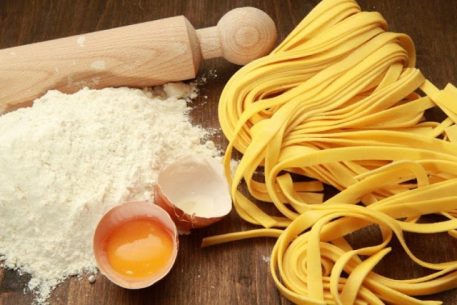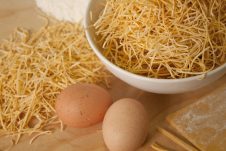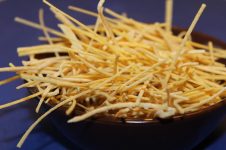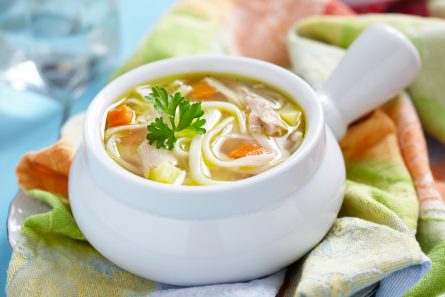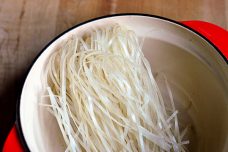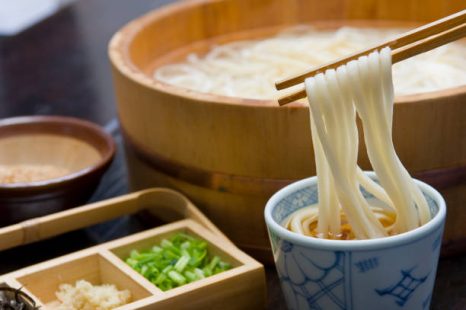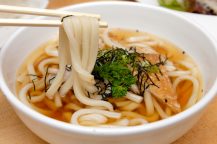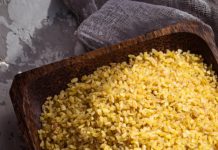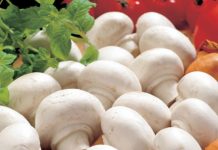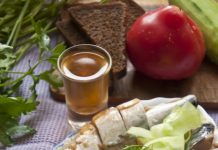Homemade noodles for soup is not only a delicious component of the traditional Russian first course, but also the basis for many recipes of traditional national cultures. For example, noodles are used as the basis for the Uzbek lagman, as part of Korean and Chinese dishes, as a side dish for dinner, and so on. That is why there are many types of noodles and features of its kneading. Let's talk about the main and most popular.
Material Content:
Cooking step by step on the eggs
Classic noodles are cooked on the water or with a small addition of eggs. And below we will tell you how to make homemade noodles for soup in a classic version. But first, we’ll take a step-by-step look at how to prepare the most delicious and labor-intensive egg noodles. Really, this huge work is worth it! This is delicious!
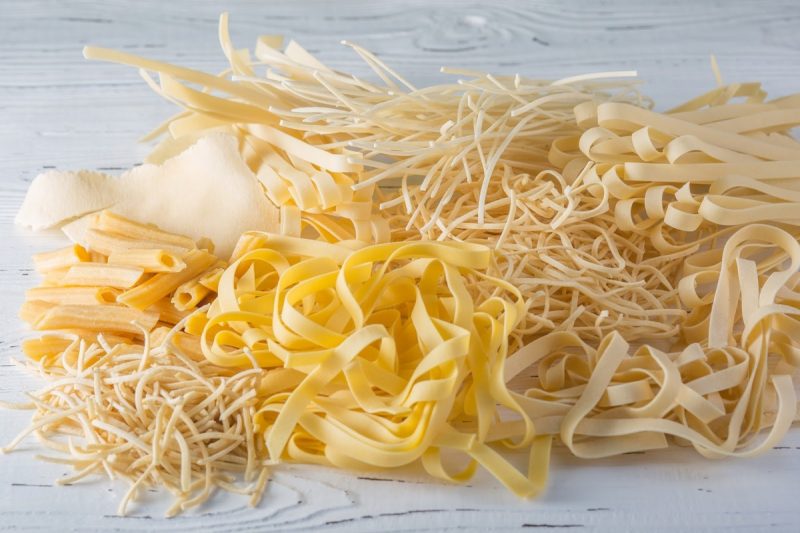
Important! Homemade noodles differs from any kind of pasta and other pasta in a special way of slicing. It is sliced very thinly and as long as possible. This is a sign of the highest quality in the understanding of any housewife who knows how to cook real homemade noodles. The second requirement is the maximum density of the test. Noodles must be “rolled”, as they say in the villages, that is, made as dense and tough as possible. Only then will it maintain its integrity.
The best noodles are hand-mixed, rolled out and expertly cut with a knife.
In the days of the USSR, there was a noodles cutter, to which an instruction corresponding to GOST was attached. This is the recipe we present. Please note that there is no salt in the composition. But the main thing is that there is no water in the recipe, which means that there is no way to completely dissolve the grains of salt. So, cook the homemade noodles on the eggs.
Recipe:
- 10 eggs;
- flour.
To begin with, we recommend reducing the number of eggs by half, because kneading and rolling out the dough normally from such a volume is quite laborious.Take as much flour as you need for a cool, dough. The exact volume depends on the moisture of the flour and the size of the eggs.
Work progress step by step:
- Sift a hill of flour into a large bowl. Make a recess.
- Beat eggs alternately and knead the dough. As soon as it begins to set in a lump, transfer and knead on the table, constantly pouring flour. Kneading the dough on some eggs is very difficult. It is dense, stretches poorly, and quite energetic efforts are required.
- Gradually adding flour, wait for the dough to become denser, cooler than dumplings and dumplings. Knead for a long time. The more you knead, stretch the dough, the more gluten forms in it, and it becomes more elastic and supple.
- When the dough has become steep, smooth and uniform in appearance, set it aside for 20 minutes, covering it with polyethylene or a bowl, so as not to wind. Lie down, rest, become even smoother.
- It is necessary to roll out, cutting off small pieces. The rest of the dough is again covered.
We will especially say about the rolling. This point is the same for all recipes.
Roll out as thin as possible.
Ideally, it was always considered the best rollout that allows you to read the headline font in a newspaper through a test sheet. If without jokes, then the thickness really should be minimal. Just a transparent sheet. Put this sheet aside or, better, hang it on the back of the chair with a paper sheet. While rolling out the rest of the sheets, the first will dry out to the point that they do not break, but do not stick together. Now we wind the sheet onto a rolling pin, take it out from the inside and we will start cutting the dried dough roll diagonally with the sharpest knife we have in the kitchen.
We assure you: if the dough is well rolled and dried, then the stripes of dough will come out thin. They can only be tattered a little and laid out on a baking sheet to dry. Ready-made noodles in dry form can be stored for a very long time.
By the way, some housewives add milk to the dough. This is unnecessary, as it gives clouding when cooking the soup. But the noodles on clean eggs will always be dense, bright yellow and transparent.
Read also:noodle soup
Classic Homemade Noodle Soup
If you don’t want to mess with egg noodles, you can prepare a simple option on water, eggs and with the addition of vegetable oil. This is the usual classic noodles. Some do it just on the water, this option is suitable for fasting. However, the taste will be different.
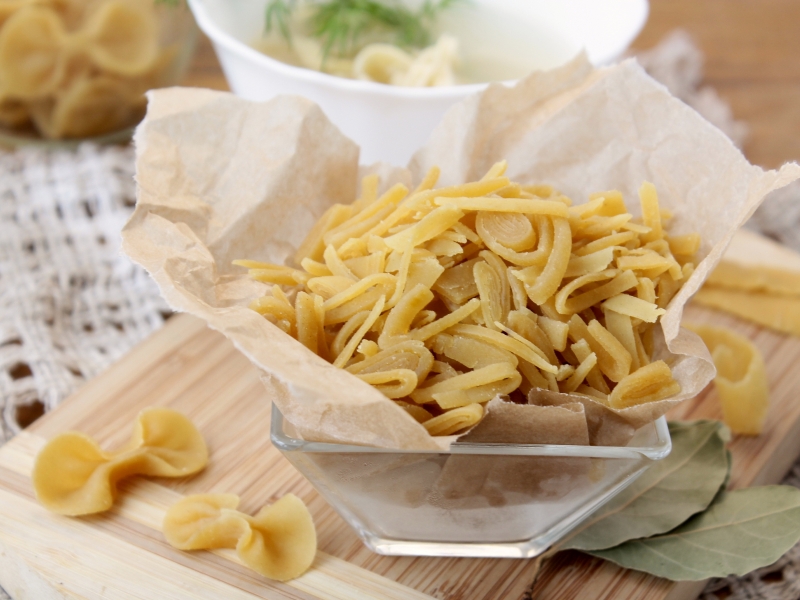
For the classic version you will need:
- 100 g of flour;
- 1 egg
- a quarter of a small spoon of salt;
- half a teaspoon of vegetable oil.
The ratio of products is in such a proportion, but the number of eggs and, accordingly, all other ingredients can be increased proportionally. You can do without oil - in this case, it serves to soften the dough. With butter, the dough rolls out better. All other manipulations are done in the same way as when cooking egg noodles.
Option for Chicken Soup
Noodle for chicken soup is no different from other types of filling in soups. If during the rolling of noodles you sprinkled flour, then it is preliminary recommended to throw it in boiling water to wash and immediately take it out, and to boil it in ready-made chicken broth. Usually for a simple chicken soup a couple or three minutes are enough to cook the dried noodles, and literally one minute is enough to cook freshly prepared noodles.
Choux pastry
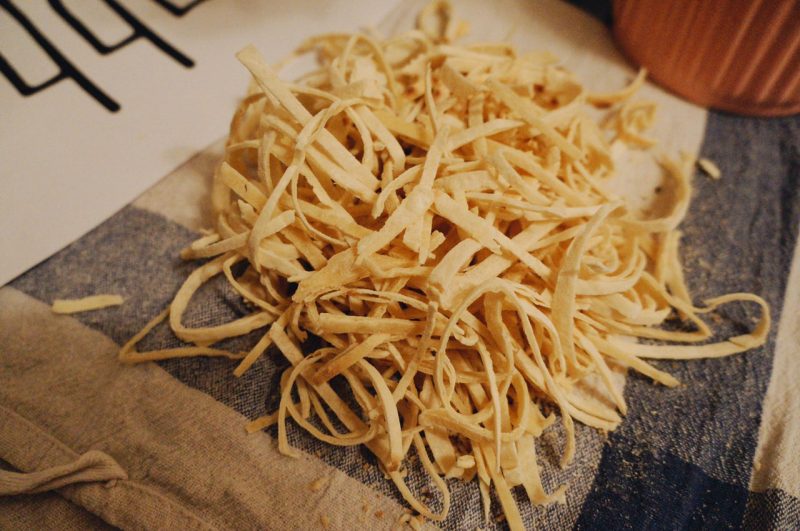
This method is different in that steep boiling water is taken to cook the noodles. They make flour. In this case, no eggs are required, only flour (350 g), boiling water (180 ml), vegetable oil (a couple of spoons) and a teaspoon of salt.
We combine all the products, knead the smooth, cool dough. If necessary, add flour, if the dough turns out to be liquidy. Unlike a purely egg dough, it is not so thickly wiped, more pliable and soft. It is easy to roll out, make noodles out of it, and also use for dumplings or dumplings.
Rice noodles
Noodles are made from rice flour, eggs and water with added salt.
Usually they use a rolling machine for it, because rice noodles must be very thin:
- a pound of flour;
- 3 eggs;
- a pinch of salt;
- one tbsp. a spoonful of water.
Everything connects, kneads and rolls out quite thinly.
How to cook wok noodles?
Wok noodles are not a type of noodles, but a way to cook them in a special pan with high sides. Any noodles are good for this dish. Most often, buckwheat noodles are used for dishes of Pan-Asian cuisine, since the combined features of the entire Asian cuisine involve unusual products and kitchen appliances. In this case, it's wok and interesting noodles.
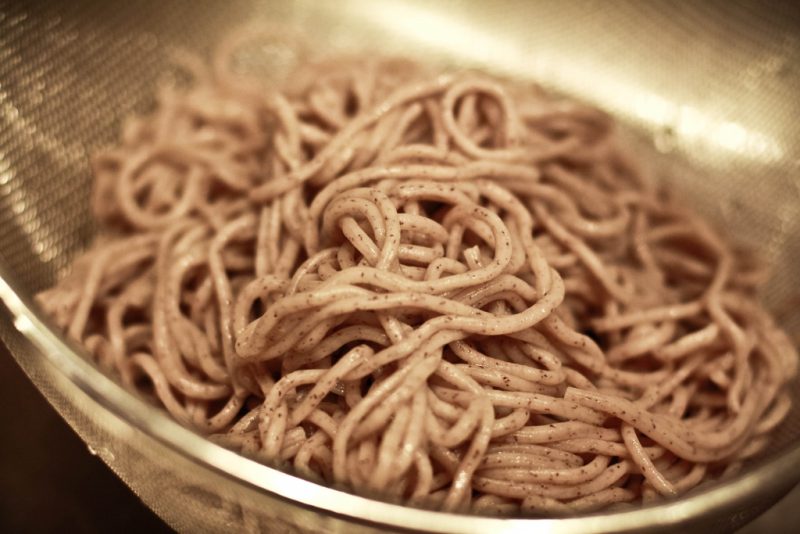
We cook it from buckwheat flour. If this is not in the store, you need to grind the kernels in a coffee grinder and use as ordinary flour. By adding an egg and water to the dough, you can knead the dough, it will be a darkish color.
Further in a wok, alternately different vegetables and meat are fried in vegetable oil. A distinctive feature of Pan-Asian cuisine is that all products are cut into the same straws and are sent in turn to be fried in a wok. Boiled buckwheat noodles also get there.
You can introduce different products into the dish, but it is traditionally prepared with this composition:
- chicken or lean pork;
- bell pepper;
- leek;
- green beans;
- young corn on the cob;
- ginger;
- chilli;
- buckwheat noodles.
Everything is flavored with soy sauce and, if desired, special sauces of Japanese or Chinese cuisine.
Udon noodles
Udon noodles have nothing special but a fashionable name. This is ordinary wheat flour noodles, which is also the softest of all types of Japanese noodles, and thick. Comparing with high-quality Russian homemade noodles, you can make a comparison not in favor of this variety. This is as if our noodles were not very successful at cooking.
It is better to use it in traditional Japanese soups, putting it in plates with other soup at the very last moment, otherwise it will blur.
Prepared from water, salt and flour. Some aesthetes advise using bleached and unbleached, that is, coarse flour, together. Known tips for cooking with the help of legs - trample a piece of dough packaged in a packet with your feet, fold it twice, stomp again, and then cut it thickly. Not sure if this noodle will be special. Rather, it is a tribute to the classical Japanese tradition, if any, at all.


